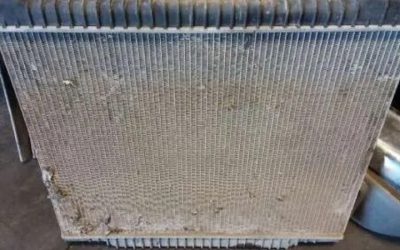Car tinting has become one of the most popular aftermarket services for vehicles, offering a range of benefits, from increased privacy to enhanced aesthetics. Car tint installation not only improves the appearance of your vehicle but also offers protection from the sun’s harmful UV rays and helps reduce heat inside the cabin. However, before you decide to tint your car windows, it’s important to understand the process, benefits, and factors involved in car tinting services.
This will guide you through everything you need to know before getting your car windows tinted, helping you make an informed decision.
1. Understanding the Benefits of Car Tinting Services
One of the main reasons people opt for car tinting services is the wide range of benefits they provide. Here are a few of the most common advantages:
Tinted windows offer an added layer of privacy, making it harder for people to see inside your vehicle. Whether you’re parked in a public place or driving through busy streets, the tint helps keep your belongings hidden from view, reducing the risk of theft.
Sun exposure can cause significant damage to your car’s interior, leading to fading upholstery and cracking dashboards. Car tint installation blocks up to 99% of harmful UV rays, helping protect both your skin and your vehicle’s interior from sun damage.
Tinted windows keep your car cooler by blocking a substantial amount of solar heat. This can help reduce the need for air conditioning, improving comfort and energy efficiency.
Driving in direct sunlight can be blinding and dangerous. Tinted windows help reduce glare from the sun and headlights, making your driving experience safer and more comfortable.
Beyond practical benefits, car window tinting can dramatically improve the appearance of your vehicle. Whether you prefer a sleek, modern look or a more luxurious feel, tinting your car windows can complement the vehicle’s style and make it stand out.
2. Types of Car Window Tint Films
There are several types of window tint films to choose from, each offering different levels of protection and aesthetics. The two most common types of car window tint films are:
Dyed tint films use layers of dye to absorb sunlight and reduce glare. While this type of tint provides privacy and UV protection, it’s generally less effective at heat rejection compared to other films. Dyed tint is often chosen for its aesthetic appeal, as it provides a darker, sleek look.
Metalized films are embedded with metal particles that reflect sunlight and heat. These tints offer better heat rejection compared to dyed films and can help prevent fading of the vehicle’s interior. However, they can sometimes interfere with electronic devices, such as GPS systems or mobile phones, due to the metal content.
Ceramic window tint is the highest-performing option. It blocks both UV rays and infrared light, offering superior heat rejection and UV protection without interfering with electronic devices. Ceramic tint is also known for its durability and clarity, making it a premium choice for car owners looking for the best of both worlds.
Carbon tint provides a balance of heat rejection, privacy, and aesthetics. It’s an excellent choice for those looking for a high-performance film without the price tag of ceramic tint. Carbon films are also durable and fade-resistant, ensuring that your tint remains effective for years to come.
3. Factors to Consider Before Getting Car Tinting Services
Before opting for car tinting services, it’s important to consider several factors to ensure you choose the best option for your vehicle. These include:
Window tinting laws vary by state and country, so it’s essential to check the regulations regarding the allowable tint percentage for your area. Different regions may have restrictions on how dark your windows can be, especially for front windows and windshields. Be sure to research the legal limits for car tint installation to avoid any fines or issues with law enforcement.
The percentage of tint refers to the amount of light the tint allows to pass through the window. A lower percentage means darker windows, while a higher percentage means more light can enter. Consider how dark you want your tint to be and whether it will meet your needs for privacy and heat reduction. A professional car tinting service can guide you in choosing the right percentage for your preferences and legal requirements.
The quality of the tint film plays a significant role in the overall performance and longevity of the tint. Cheap or low-quality tint films may fade or peel over time, reducing their effectiveness. It’s essential to choose high-quality film that provides excellent UV protection, heat rejection, and durability.
Proper car tint installation is crucial to achieving the desired look and functionality. Poor installation can lead to bubbles, wrinkles, or uneven coverage, which can compromise the appearance and performance of the tint. It’s important to choose a professional car tinting service with experience in the installation process to ensure the best results.
4. The Car Tinting Installation Process
The process of getting your car tinted involves a few key steps:
- Consultation: A tinting professional will discuss your preferences, explain your options, and guide you in selecting the right tint film for your vehicle.
- Preparation: The windows of your vehicle are thoroughly cleaned to remove any dirt, dust, or residue, ensuring that the tint film adheres properly.
- Tint Application: The tint film is carefully applied to the windows, ensuring that there are no air bubbles or wrinkles.
- Drying and Curing: After installation, the tint needs to dry and cure. This process can take anywhere from a few hours to a couple of days, depending on the film and environmental conditions.
Once your windows are tinted, it’s important to follow proper aftercare instructions to ensure the longevity of the tint. Avoid rolling down the windows for at least 24 to 48 hours after installation, as this allows the film to properly adhere to the glass. Regular cleaning with non-abrasive cloths and cleaners will help maintain the tint’s appearance.
Car tinting services are a valuable investment for your vehicle, offering numerous benefits such as UV protection, heat reduction, and improved privacy. Before getting your car windows tinted, it’s essential to consider the type of tint, the installation process, and legal restrictions in your area. By understanding these factors, you can make an informed decision and enjoy all the benefits of professional car tint installation.
If you’re ready to enhance your vehicle’s appearance and protect its interior, consider partnering with a trusted partner like Premier Tint & Detail. Their expertise in car tinting services will ensure that you get the best results for your vehicle.


